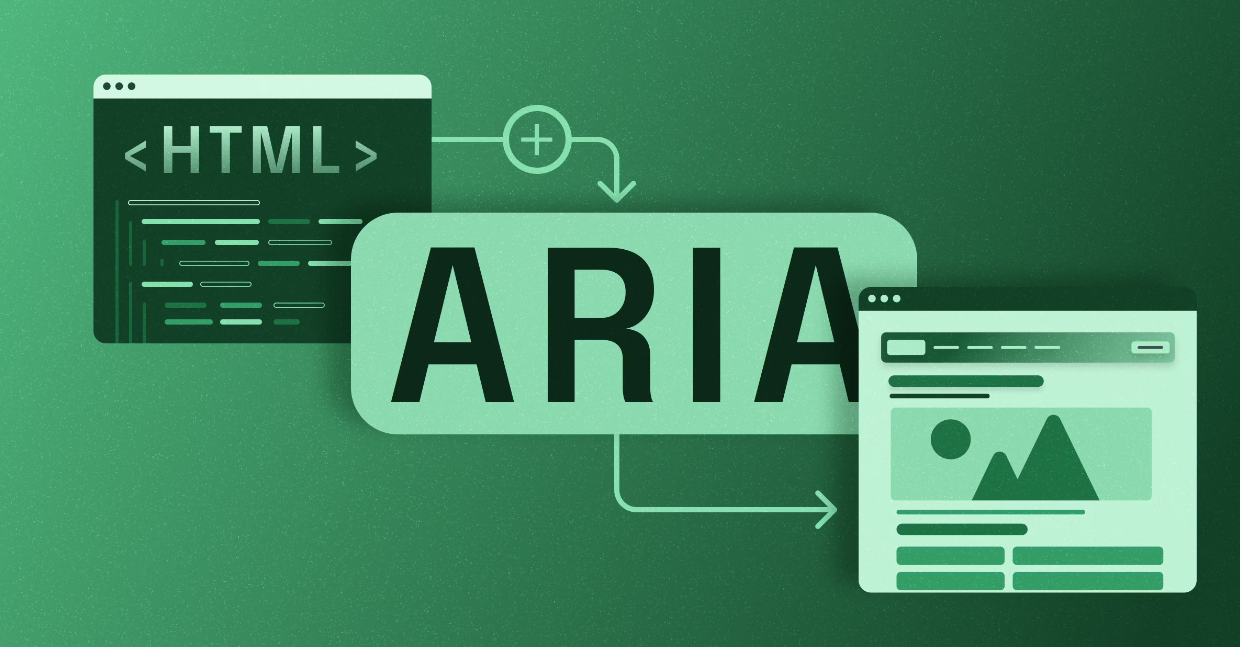Accessibility in HTML
ARIA: Accessible Rich Internet Applications

ARIA (Accessible Rich Internet Applications) is a set of attributes that enhances the accessibility of dynamic web applications. These attributes allow for a better description of the purpose and state of interactive elements, especially those that are not natively accessible in HTML.
In this chapter, we will explore the basics of ARIA, how and when to use it, and best practices to ensure your applications are inclusive.
What is ARIA?
ARIA provides roles, properties, and states that describe the behavior of web page elements to assistive technologies, such as screen readers.
ARIA Roles
Roles specify the purpose of an element, especially in dynamic interfaces. Examples of common roles:
role="button": Indicates that an element acts as a button.role="dialog": Identifies a modal window.role="navigation": Marks a navigation section.
Example of role usage:
html
ARIA States and Properties
States describe the current condition of an element, such as whether it is expanded or selected. Examples:
aria-expanded: Indicates whether a collapsible element is open.aria-selected: Marks an element as selected in a list.
Example of ARIA state:
html
Relationship between elements with ARIA
Attributes such as aria-labelledby and aria-describedby connect related elements, providing additional context.
Example of ARIA relationship:
html
Best Practices for Using ARIA
- Use semantic HTML whenever possible: ARIA should not replace native tags.
- Avoid overuse: Only use ARIA when necessary to enhance accessibility.
- Test with assistive technologies: Make sure that ARIA attributes work as expected.
ARIA in dynamic elements
Dynamic elements such as dropdown menus or tabs can greatly benefit from ARIA.
Example of accessible tabs:
html
Limitations of ARIA
Although ARIA is powerful, it has limitations:
- It does not modify the native behavior of the element.
- It requires careful handling to avoid confusion.
- It is not supported by old browsers or devices.
Conclusion
ARIA is a powerful tool that can significantly improve the accessibility of dynamic applications. However, it must be used carefully and in combination with native HTML tags. In the next chapter, we will explore tools and techniques to evaluate the accessibility of your projects. Join us!
Support Chuck’s Academy!
Enjoying this course? I put a lot of effort into making programming education free and accessible. If you found this helpful, consider buying me a coffee to support future lessons. Every contribution helps keep this academy running! ☕🚀

Chat with Chuck

- Introduction to Accessibility in HTML
- Web Content Accessibility Guidelines (WCAG)
- Semantic HTML for Accessibility
- Accessible Forms and Inputs
- Accessible Images, Media, and Graphics
- Accessible Navigation and Focus Management
- ARIA: Accessible Rich Internet Applications
- Accessibility in Custom Components
- Evaluación y Pruebas de Accesibilidad
- Relationship Between Performance and Accessibility
- Creating an Accessible Workflow
- Course Conclusion: Accessibility in HTML













